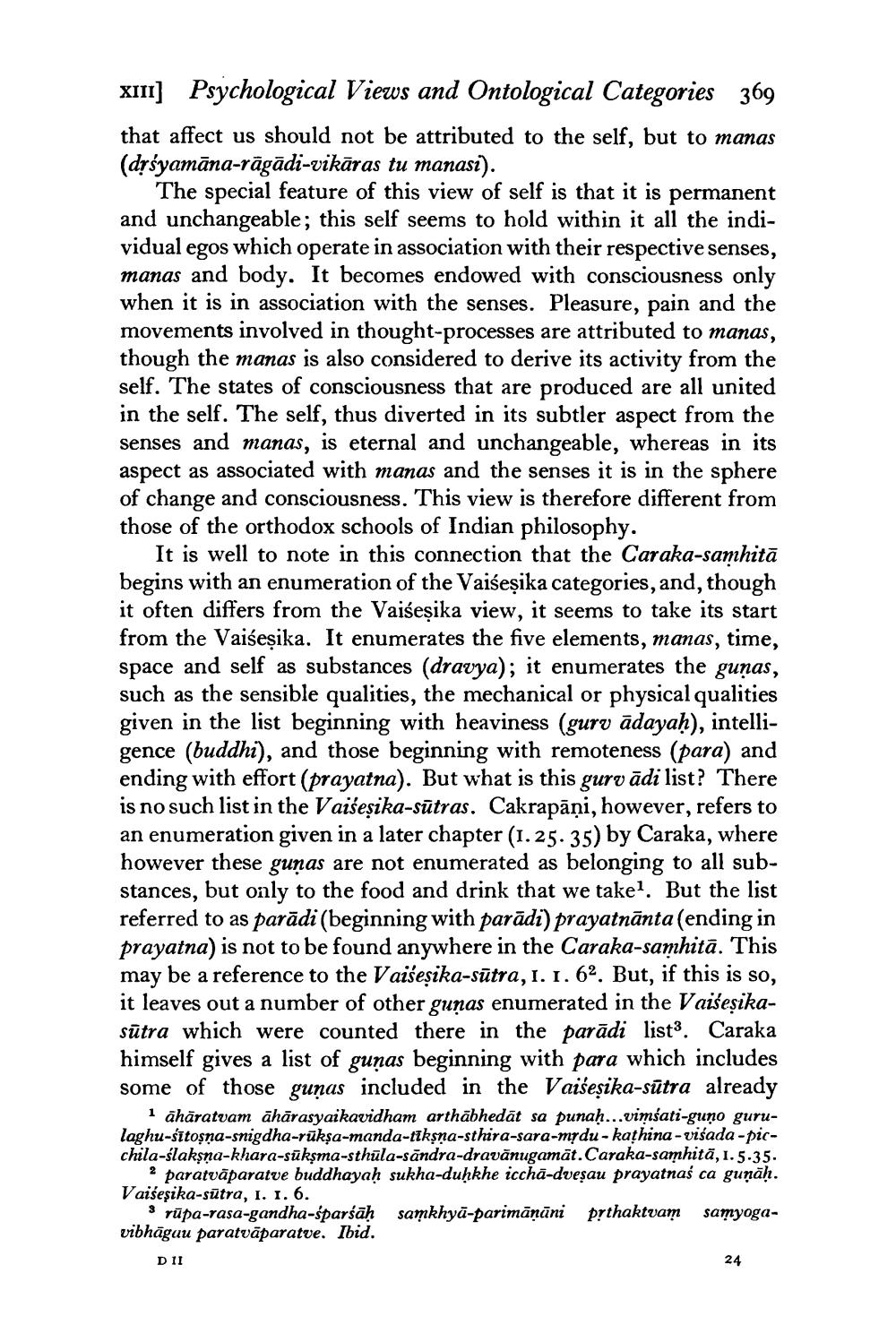________________
X11] Psychological Views and Ontological Categories 369 that affect us should not be attributed to the self, but to manas (drśyamāna-rāgādi-vikāras tu manasi).
The special feature of this view of self is that it is permanent and unchangeable; this self seems to hold within it all the individual egos which operate in association with their respective senses, manas and body. It becomes endowed with consciousness only when it is in association with the senses. Pleasure, pain and the movements involved in thought-processes are attributed to manas, though the manas is also considered to derive its activity from the self. The states of consciousness that are produced are all united in the self. The self, thus diverted in its subtler aspect from the senses and manas, is eternal and unchangeable, whereas in its aspect as associated with manas and the senses it is in the sphere of change and consciousness. This view is therefore different from those of the orthodox schools of Indian philosophy.
It is well to note in this connection that the Caraka-samhitā begins with an enumeration of the Vaiseșika categories, and, though it often differs from the Vaiseșika view, it seems to take its start from the Vaiseșika. It enumerates the five elements, manas, time, space and self as substances (dravya); it enumerates the gunas, such as the sensible qualities, the mechanical or physical qualities given in the list beginning with heaviness (gurv ādayaḥ), intelligence (buddhi), and those beginning with remoteness (para) and ending with effort (prayatna). But what is this gurv ādi list? There is no such list in the Vaišeșika-sūtras. Cakrapāņi, however, refers to an enumeration given in a later chapter (1.25.35) by Caraka, where however these gunas are not enumerated as belonging to all substances, but only to the food and drink that we takel. But the list referred to as parādi (beginning with parādi) prayatnānta (ending in prayatna) is not to be found anywhere in the Caraka-samhitā. This may be a reference to the Vaišeșika-sūtra, 1. 1. 62. But, if this is so, it leaves out a number of other guņas enumerated in the Vaišeşikasūtra which were counted there in the parādi list?. Caraka himself gives a list of guņas beginning with para which includes some of those guņas included in the Vaišeşika-sūtra already
i āhāratvam āhārasyaikavidham arthābhedāt sa punah...vimsati-guņo gurulaghu-sītosna-snigdha-rūkşa-manda-tīksna-sthira-sara-mydu- kathina - visada-picchila-slakşna-khara-sūkşma-sthūla-sāndra-dravānugamät.Caraka-samhitā, 1.5-35.
2 paratvāparatve buddhayaḥ sukha-duḥkhe iccha-dveşau prayatnaś ca guņā). Vaišeşika-sūtra, 1. 1. 6.
* rūpa-rasa-gandha-sparsāḥ samkhyā-parimāṇāni pythaktvam samyogavibhāguu paratvāparatve. Ibid.
DII
24




